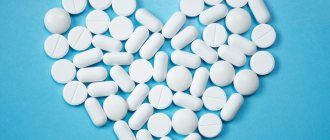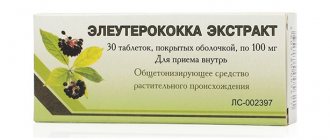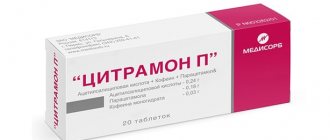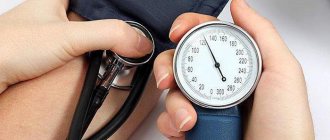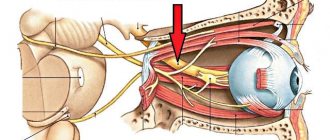(Health Center) There is a lot of talk about high blood pressure (hypertension). But low blood pressure (hypotension) seems to be considered a minor problem. The number of risks associated with hypotension is much less than with hypertension. However, those whose blood pressure is consistently below normal often feel tired and overwhelmed. For such people, knowing the possible causes of hypotension, and especially knowing how to stabilize low blood pressure, means a significant improvement in quality of life.
Causes of low blood pressure and ways to solve the problem
Low blood pressure causes lethargy and fatigue, accompanied by dizziness, decreased ability to concentrate and thus can significantly worsen your well-being. Doctors often tell hypotensive patients that low blood pressure is not as serious a problem as hypertension, and therefore nothing needs to be done.
But for anyone who would like to feel better, such words, of course, are of little use. Therefore, we will tell you about the possible causes of low blood pressure, which even doctors often do not think about, as well as how you can increase low blood pressure.
Low blood pressure - less than 100/60 mmHg
As you know, when measuring blood pressure, two indicators are distinguished: systolic and diastolic pressure.
First, the systolic blood pressure is indicated. This pressure occurs when the heart pumps blood into the arteries. It is always higher than diastolic pressure.
The second indicator is diastolic blood pressure. This is the pressure in the blood vessels between two contractions of the heart, that is, at the moment when the heart is not pumping blood.
Healthy blood pressure, according to today's understanding, is approximately 120/80 mmHg. Indicators above 140/90 mm Hg. Art. referred to as high blood pressure. If the pressure gauge regularly shows less than 90/60 mmHg. Art. and even less than 100/60 mmHg. Art., then they talk about low blood pressure. If only one of the two indicators is very low, this is already enough for the development of the corresponding symptoms.
Blood pressure is constantly changing
However, blood pressure fluctuates and values can change greatly in a short time, even between two heartbeats. The fact is that blood pressure depends on many factors: body position (whether a person is lying, standing or running), breathing rate, stress level, state of health, nutrition, what medications a person takes, and the time of day . For example, at night your blood pressure is usually very low. When we wake up, it increases quickly.
Danger
An increase in lower pressure often has no symptoms, and a person does not even know about it. They may be discovered during a routine examination or when visiting a doctor for other reasons. There is a misconception that only elevated upper blood pressure threatens health and life, but in fact, an increase in lower blood pressure is no less dangerous. The heart in this state is constantly tense and practically does not relax. The blood flow in it is disrupted, the disease progresses, structural changes begin to occur, which ultimately become irreversible.
It is important to know that high lower blood pressure cannot be ignored. It leads to organ dysfunction and, without treatment, can result in death within six months. There is a high risk of developing thrombosis, heart attacks, and strokes.
Low blood pressure is often a good sign
It is possible that a person’s blood pressure is often low, that is, less than 100/60 mmHg. Art., but I feel excellent and have no complaints. This means that this blood pressure is optimal and helps a person stay healthy as they age.
Athletes tend to have lower overall blood pressure and a slower heart rate than the average person. Non-smokers, those who are of normal weight and who eat healthily also tend to have low blood pressure (which is a good sign), while smokers, people who are overweight, have a poor diet and are sedentary often have low blood pressure. have to deal with high blood pressure.
However, if your blood pressure is constantly low and you do not feel in good shape, then your blood pressure is definitely TOO low and you need to start looking for the causes and solutions to the problem. You may be experiencing the symptoms listed below.
Low blood pressure physiological and pathological
Physiological is most often present in professional athletes who engage in high-stress sports for a long time. In addition, pressure decreases under certain conditions, for example, during high humidity (in hot, humid countries, in a bathhouse), and thin air (in the mountains, on an airplane). In this case, it does not cause any inconvenience.
Low blood pressure is considered a pathology if it has dropped as a result of large blood loss or shock - painful, traumatic, toxic and others.
Symptoms of low blood pressure
Low blood pressure is manifested by the following symptoms:
- dizziness to the point of fainting,
- darkness before the eyes when standing up,
- visual impairment,
- noise in ears,
- headache,
- fatigue and decreased concentration,
- dyspnea,
- pallor,
- cold feet and hands.
A sudden drop in blood pressure can be dangerous. Even its decrease by only 20 mm Hg. Art. (eg, from 110 to 90 mm Hg in systole) sometimes causes dizziness and loss of consciousness because the brain does not receive enough blood as a result.
If blood pressure decreases as a result of significant blood loss (in an accident), serious infections or allergic reactions, low blood pressure can be life-threatening. Fortunately, this rarely happens.
What is hypotension?
The term arterial hypotension (hypotension) defines a decrease in blood pressure. This is not a separate disease, but a syndrome that develops as a result of exposure to various provoking factors or against the background of diseases. A decrease in the indicator leads to a decrease in the volume and speed of blood flow in peripheral tissues. First of all, the cells of the nervous system, which are very sensitive to energy and oxygen starvation, are affected.
Low blood pressure - causes
Arterial hypotension develops due to exposure to a large number of pathological or physiological causes. The most common ones include:
- Poisoning of the body
– ingestion of various toxins from the outside with food, inhaled air, or intoxication due to the development of an infectious process.
- Violation of the regulatory influence of nervous system structures
on arterial vessels, leading to a sharp decrease in the tone of their walls - cerebral stroke, organic changes, infectious processes in the structures of the central nervous system, previous traumatic brain injuries, functional disorders of various origins.
- Dilatation of arteries against the background of decreased tone of the whole body
, which occurs against the background of physical and mental fatigue, lack of sleep, poor nutrition, hypovitaminosis (hypovitaminosis is an insufficient supply of one or more vitamins to the body).
- Decrease in circulating blood volume due to blood loss
(internal or external hemorrhage) or dehydration (loss of fluid due to uncontrollable diarrhea, vomiting, insufficient water intake).
- Severe allergic reactions
, accompanied by a pronounced decrease in arterial tone - anaphylactic shock.
- Changes in hormone levels in the blood
, which have a regulating effect on arterial tone, heart rate, blood pressure and other hemodynamic indicators - adrenaline, hormones of the adrenal cortex, pituitary gland influence the course of a large number of physiological processes in the body.
- Redistribution of fluid in the body
with a transition from the vascular bed to the intercellular substance of tissues, which leads to a decrease in the volume of circulating blood with arterial hypotension.
- Weakening of the contractile function of the heart
, provoked by pathological processes in the myocardium - infarction, myocardiopathy, myocarditis.
- Violation of the rhythm and frequency of heart contractions
, caused by various pathological factors and leading to a decrease in blood pressure.
A decrease in the level of systemic blood pressure is a consequence of pathological processes in other organs, in particular with diabetes mellitus, hepatitis, and anemia. Physiological arterial hypotension develops during the period of adaptation of the human body to a reduced concentration of oxygen in the inhaled air (stay in high mountain areas). Causes of low blood pressure in women include the effects of hormonal changes during menstruation, early pregnancy, and menopause (age-related decline in reproductive function).
Low blood pressure - symptoms?
Arterial hypotension is accompanied by a violation of the functional state of various organs and systems, which develops against the background of energy and oxygen starvation. Symptoms of low blood pressure include the following:
- General weakness
– a constant symptom of hypotension, the severity of which depends on the degree of decrease in blood pressure.
- Dizziness
– the result of oxygen starvation of neurocytes.
- Memory impairment, decreased mental performance
– low blood pressure affects a person’s higher nervous activity; signs usually appear with prolonged moderate hypotension, as well as against the background of the development of anemia.
- Paleness of the skin and visible mucous membranes
– the sign appears in cases where arterial hypotension develops sharply and is accompanied by a decrease in circulating blood volume (after bleeding).
- Headache
, which is predominantly localized in the temples, crown and can have varying severity.
With severe hypotension, a person loses consciousness, which is associated with oxygen starvation of the cerebral cortex. If systolic pressure is below 70 mm Hg. Art. acute renal failure develops, decompensation of the functions of all organs, which becomes the cause of death.
To understand why a particular patient has low blood pressure, a doctor (general practitioner, family doctor, cardiologist) must prescribe an additional objective examination. It includes various techniques, namely clinical blood tests, urine tests, ECG, X-rays, computed tomography, magnetic resonance imaging. Based on a thorough and reliable diagnosis, the correct treatment is prescribed.
Types of low blood pressure
In general, low blood pressure conditions fall into three categories:
- Primary hypotension
In this case, the causes of hypotension are unknown. It is believed that slender young women often face this problem. This form of low blood pressure also occurs in people who lead a sedentary lifestyle. However, in general, this group includes all hypotensive patients whose causes of low blood pressure remain unclear from the standpoint of official medicine.
- Secondary hypotension
The adjective “secondary” means that hypotension is a consequence of another disease or the result of other known factors. This could be a hormonal imbalance (Addison's disease, low thyroid function), a side effect of medications taken, heart disease, or a phenomenon accompanying an infectious disease.
The advantage of secondary hypotension is that when the cause of low blood pressure is known, it is easier to find a solution.
- Orthostatic hypotension
This form of low blood pressure manifests itself primarily in the fact that when getting up from a lying or sitting position, you feel dizzy, your vision becomes dark, and you feel like you need to grab onto something to avoid falling.
When a person stands up, the blood naturally goes down to the legs. A healthy body easily compensates for this displacement: the blood vessels narrow, the heart begins to beat faster. Thanks to this, the brain is supplied with blood.
In people suffering from orthostatic hypotension, this regulatory mechanism is disrupted. Blood pressure drops, and in the worst case, the person loses consciousness.
This form of low blood pressure can be caused by various reasons. Blood pressure does not necessarily remain low all the time - it may only happen on some days or only during certain periods, for example during pregnancy, during extreme heat or after lying in bed for a long time. Diabetes, heart problems, certain neurological disorders, and varicose veins also—along with the medications listed below—may increase the risk of orthostatic hypotension.
Those diagnosed with orthostatic hypotension should rise very slowly. You should not get up immediately from a lying position: you must first sit down, sit for one or two minutes and only then get up.
Sometimes blood pressure drops immediately after eating. This form of hypotension is called postprandial hypotension.
How to lower lower blood pressure
To normalize blood pressure, you must first understand the reasons that increase it. For example, with adrenal or thyroid dysfunction, the cause is improper hormone production. When they are in excess, the lower blood pressure rises sharply. A person with one kidney in such an acute condition can die.
If jumps in lower pressure occur due to the accumulation of fluid in the body, it is important to establish the water-ion balance. In some people, it is disrupted due to poor nutrition, overeating, and abuse of salty and fatty foods. For others, fluid stagnation is caused by an imbalance of hormones. In the first case, you can return your lower blood pressure to normal by restoring your diet, daily physical activity, and excluding large amounts of salty, smoked, and fried foods. In a situation with the influence of hormonal levels, it is necessary to receive a course of treatment from an endocrinologist.
When lower pressure increases, the synthesis of renin is disrupted, which should normalize the force of action on the walls of blood vessels. But due to atherosclerosis, the pressure cannot be reduced - even with high elasticity of the walls, the lumen remains narrow due to overgrown atherosclerotic plaques. In such a situation, first of all, it is necessary to reduce the level of bad cholesterol in the blood and monitor its levels.
Postprandial hypotension
In people with postprandial hypotension, too much blood flows into the digestive system after eating. Compensation mechanisms, which in a normal situation ensure blood supply to the brain as before, despite the digestion of food, do not work in this case.
Postprandial hypotension is often observed in hypertensive patients, which, of course, can be explained by incorrect dosage of drugs to lower blood pressure.
If you have postprandial hypotension, you should always eat only small portions and ensure that the food is healthy, nutrient-dense and does not contain isolated carbohydrates (sugar, white flour products).
Consequences of a sharp decrease in high blood pressure
And here’s the thing: if you suddenly release the pressure, the same organs can suffer much more severely. Considering that after some time they somehow adapt to even the most significant increase in pressure, a sharp decrease in blood flow and the oxygen it carries can take them by surprise.
The most insidious drugs that can quickly “collapse” blood pressure are nitrates. After a nitroglycerin tablet slipped by compassionate citizens, people often lose consciousness on the street and in transport.
Brain
A sharp decrease in blood pressure can cause a lack of blood supply to the brain. At best, this will manifest itself as a short-term loss of consciousness, which may not end so harmlessly if the fallen person receives a facial injury or concussion. At worst, an ischemic stroke will develop. Especially if the blood supply to the brain is already deteriorated, either as a result of narrowing of the lumen of the carotid arteries by atherosclerotic plaques, or as a result of the development of pathological tortuosity of the carotid arteries, a pathology that often occurs after sixty.
Heart
A sharp decrease in blood pressure can cause not only a stroke, but also a myocardial infarction. The reason for this, in most cases, will be the same atherosclerotic plaques, this time in the vessels of the heart. A sharp decrease in blood pressure will lead to the fact that a section of the myocardium will be without blood supply and the heart cells will die. Moreover, against the background of a decrease in pressure, the heart will reflexively begin to compensate for this situation by accelerating the frequency and strength of heart contractions, which will only increase its need for oxygen, which, due to low pressure, will not be delivered to the myocardium on time.
Kidneys
Another organ that directly depends on blood pressure is the kidneys. And if high pressure is not good for them, then low pressure, frankly speaking, is harmful. Indeed, with low pressure, they cannot carry out their main function - filtering blood and producing urine. Being very sensitive to any changes in pressure, as a result of a sharp drop in the latter, disturbances in the functioning of the kidneys can occur, including the development of renal failure. And one more aspect, if the reduction in pressure was not carried out with drugs that block the renal enzyme ACE (ACE blockers or angiotensin 2 receptor antagonists), then in response to a drop in pressure, a rebound effect is quite possible, when the kidneys quickly release a large amount of the enzyme, and the pressure will jump again.
Causes of low blood pressure
Often it is not possible to find out the cause of low blood pressure. This may be unpleasant for patients, but does not have serious consequences - unlike patients with chronically high blood pressure.
However, often the doctor is the cause of low blood pressure, which is not thought about at all. Of course, not directly, but indirectly. Many people have had their blood pressure rise during a doctor's appointment at some time in the past. They were prescribed drugs to lower blood pressure, patients diligently took the pills, and it did not occur to them to check whether this was still necessary.
- Blood pressure lowering medications are the main cause of high blood pressure
In the summer of 2016, the results of a study on this topic were published. It covered more than 11,000 patients over the age of 70 years. 1,900 of them had low blood pressure. Imagine: 1,246 of them were taking blood pressure medications. Of those with the lowest blood pressure, 70 percent used such drugs.
Thus, in older people, the main cause of too low blood pressure is blood pressure-lowering medications.
Apparently, they are prescribed very often, without thinking about the fact that the patient's condition may change. Some people are prescribed other drugs over time (see point 2).
The interaction of medications is not always taken into account, and therefore a situation may arise when medications further reduce blood pressure, lowering it below a minimum. At the same time, it is precisely in older people that too low blood pressure often causes death and referral to the hospital - this fact was noted by the authors of the study.
Therefore, if, while taking medications to lower blood pressure, you feel unwell, often feel dizzy and weak, it is possible that the cause of this condition is not high blood pressure, but, on the contrary, too low blood pressure due to the medications. Consult your doctor about this!
The most well-known drugs that lower blood pressure include:
- diuretics (diuretics), such as furosemide and hydrochlorothiazide, which are prescribed for high blood pressure, but also for edema, heart and kidney failure and hyperkalemia (excess potassium),
- alpha blockers, such as prazosin,
- beta blockers such as atenolol.
- Medicines
In addition to special drugs, other drugs can reduce blood pressure and thus cause hypotension. Many of them were developed and are assigned to solve completely different problems.
- Medicines for Parkinson's disease, such as pramipexole, and products containing levodopa.
- Some (tricyclic) antidepressants, for example, doxepin, imipramine, etc.
- Viagra (sildenafil), especially in cases where nitroglycerin is also taken for heart support (against angina).
- Sedatives.
- Antihistamines.
- Pregnancy
During pregnancy, due to increased stress on the body, blood pressure can drop significantly. As a rule, blood pressure returns to normal, at the latest after childbirth.
- Heart problems
If the cause of too low pressure is heart problems, the matter is not limited to slight dizziness. Many other complaints also arise. Heart problems that can cause low blood pressure include bradycardia (very low heart rate), heart valve disease, myocardial infarction, or heart failure.
- Functional disorders of the thyroid gland
Reduced thyroid function can also cause low blood pressure. Because both conditions (low glandular function and hypotension) have similar symptoms, patients sometimes think they “only” have low blood pressure. But in fact, there may be a malfunction of the thyroid gland.
- Adrenal insufficiency
If adrenal function is weakened, low blood pressure may occur along with other symptoms. The adrenal glands, which sit directly on the kidneys, produce hormones including adrenaline and norepinephrine. Both of these hormones activate the body. When needed, they speed up the heart rate, improve blood flow to the muscles, promote the release of glucose and increase blood pressure.
In the case of chronic adrenal insufficiency, such an activating effect on blood pressure is absent, blood pressure becomes chronically low, and the person feels completely powerless.
- Dehydration
Dehydration (lack of water) is also a serious cause of low blood pressure. It occurs in those who consume too little fluid or lose a lot of fluid due to certain circumstances (such as diabetes, fever, vomiting, diuretic abuse, extreme sports without drinking). Even slight dehydration can cause weakness, dizziness and fatigue.
- Deficiency of essential substances
Lack of vitamin B12, folate (folic acid) or iron leads to anemia. The body loses its ability to produce enough red blood cells. As a result, anemia develops and blood pressure decreases. There is a feeling of weakness, loss of strength. Other B vitamins and vitamin C also improve blood pressure and can seriously help with low blood pressure.
Diagnosis and treatment
Considering the fact that hypotension can serve as a symptom of many diseases or be an independent pathology, an examination is necessary to exclude diseases that could lead to a decrease in pressure. In this regard, there is no strictly defined list of examinations. To understand why the patient has low blood pressure, a diagnostic plan is drawn up and prescribed strictly individually, taking into account the patient’s history and previous diseases.
When establishing the cause of the disease, therapy usually uses complex methods aimed at restoring and strengthening the vascular wall and treating the underlying disease, if required, strengthening the autonomic nervous system and immune processes. General stimulants are prescribed, for example, drugs containing caffeine.
Many herbal preparations, so-called “folk remedies,” also have a tonic effect, which can also help with low blood pressure (hypotension). Self-administration of such drugs, however, requires great caution, because the same substances can have different effects on different people. Sometimes a paradoxical reaction and deterioration of the patient's condition may occur.
You should not self-medicate for hypotension! Only a doctor can prescribe the drugs necessary for a particular patient after he has examined the patient and established the cause of hypotension and the characteristics of its course.
Low blood pressure: natural ways to improve your health
Even the list of possible causes already given shows that there are many ways to increase low blood pressure again. First you need to find out the cause of low blood pressure. When it is found, treatment begins.
This is not always easy: problems begin already in cases where low thyroid function or adrenal insufficiency is diagnosed. Often official data says that everything is fine, but a person feels completely different.
Adrenal insufficiency is detected by examining saliva. Specific measures should be discussed with a specialist in alternative medicine.
Preventive actions
There is no specific prevention of hypotension, but the risk of its development can be reduced by following a diet, work and rest schedule, physical education, regular preventive examinations, avoiding the consumption of alcoholic beverages and treatment of underlying somatic diseases.
When the first signs of arterial hypotension appear, you should seek medical help. You can use the CELT clinic, which has experienced cardiologists who can not only make a diagnosis and find out the causes of hypotension, but also provide comprehensive treatment.
Make an appointment through the application or by calling +7 +7 We work every day:
- Monday—Friday: 8.00—20.00
- Saturday: 8.00–18.00
- Sunday is a day off
The nearest metro and MCC stations to the clinic:
- Highway of Enthusiasts or Perovo
- Partisan
- Enthusiast Highway
Driving directions
Contrast shower and Kneipp douches
Master the contrast shower and practice Kneipp douches. Yes, you can prescribe what is called hydrotherapy if your doctor agrees that it will help combat low blood pressure.
When dousing, the following must be taken into account. Warm water relaxes and relieves spasms, while cold water mobilizes. If you have low blood pressure, you should either use cold water or change the temperature of the water: this activates blood circulation and helps increase blood pressure.
Kneipp foot soaking is commonly practiced. To do this, cold water (temperature 20 degrees) is poured onto the foot from the knee, then directly onto the foot and again up the calf to the popliteal fossa, and then down again. After a warm shower, you can quickly douse yourself with cold water. If this is difficult for you, limit yourself to cold pouring on your feet.
Drink still water regularly
With low blood pressure, water helps not only from the outside, but also from the inside. If you are one of those people who often forgets to drink enough, the first thing you should do at the first symptoms of low blood pressure is drink a large glass of water. Often this is already enough.
As stated above, not drinking enough fluids can seriously aggravate, if not cause, low blood pressure. Therefore, regularly drink 30 ml per kilogram of weight per day. To do this, it is best to choose high-quality still or lightly carbonated water.
To enhance the effect of a glass of water for severe dizziness, cook vegetable broth and drink it or simply add a little salt to the water.
Check the level of vital elements in the body
Get tested for essential minerals and vital substances (vitamin B12, vitamin D, iron, zinc, etc.) and check whether your diet contains enough of the necessary elements. To do this, you can contact a healthy nutrition consultant. If in doubt or found to be deficient in specific substances, take appropriate nutritional supplements.
You can almost always take magnesium and a high-quality B vitamin complex, even without testing. Magnesium is a mineral that is involved in many reactions in the body and at the same time is present in insufficient quantities in modern food. Therefore, in most cases, taking it is only beneficial.
The same can be said about B vitamins. In addition, these vitamins dissolve in water, and therefore, in case of excess intake into the body, they are simply excreted in the urine. Along with vitamin B12, vitamin B5 is also especially important for low blood pressure: its deficiency can provoke hypotension.
Vitamin C deficiency is also a cause of low blood pressure. This is because vitamin C stimulates blood circulation, and therefore blood pressure.
Check your vitamin D levels
Vitamin D levels are particularly important: today in Central Europe there is usually not enough vitamin D, which is responsible for many chronic diseases. Vitamin D is the sun vitamin, that is, the vitamin that is formed in the skin when exposed to ultraviolet radiation. Food contains very little of it. Thus, a lack of sunlight usually means a deficiency of vitamin D.
Among other things, it is involved in regulating blood pressure. Therefore, a lack of this vitamin can contribute to low blood pressure. A study published in 2014 found that vitamin D deficiency increases orthostatic hypotension, especially in older people.
Rule out cryptopyrroluria
If you have symptoms other than low blood pressure, such as depression, hair loss, cracked lips, skin problems, or hormonal imbalances, consider getting tested for cryptopyrroluria.
This metabolic disorder also causes low blood pressure.
If the cause of low blood pressure cannot be found or if the condition does not improve despite all efforts to improve your lifestyle, it is usually recommended to simply move more or drink small amounts of alcohol or strong coffee. These measures, with the exception of physical activity, cannot be called healthy. Caffeine and alcohol have only a short-term effect, which means they cannot solve the problem for a long time.
However, there are methods and solutions that allow you to increase blood pressure not only reliably, but also without harm to health.
Diagnostics
During the initial examination, a general practitioner or cardiologist assesses the constitution and nutritional status, and conducts a physical examination of the respiratory and cardiovascular systems. In addition to standard blood pressure measurements, 24-hour blood pressure monitoring is recommended to obtain a complete picture. A diagnostic search involves the appointment of a set of laboratory and instrumental methods:
- Blood tests.
The hemogram often has a reduced content of hemoglobin and red blood cells, and with infectious shock, high leukocytosis is observed. During a biochemical blood test, attention is paid to the level of total protein, electrolytes, and cholesterol. For symptoms of anemia, serum iron, ferritin, and transferrin levels are examined. - Hormonal studies.
If persistently low blood pressure is detected, the level of thyroid hormones T3 and T4 and the pituitary hormone TSH must be measured. The concentration of catecholamines and adrenal steroid hormones is determined in the blood and urine. According to the indications, the level of insulin and C-peptide is assessed. - ECG.
Used as a screening method to assess the electrical activity of the heart. If cardiac arrhythmias and signs of myocardial ischemia are detected on the cardiogram, echocardiography is necessary. With echocardiography, the contractility of the heart is assessed and structural anomalies are found. - Neurological examination.
In the absence of other causes of low blood pressure, the patient is referred to a neurologist. To assess the functioning of the autonomic nervous system, the doctor performs breath-holding tests during inhalation and exhalation, orthostatic and clinostatic tests.
Rosemary - a remedy for low blood pressure
Rosemary essential oil is believed to effectively stimulate blood circulation, increase blood pressure and refresh the body, so much so that patients with high blood pressure should not take it.
However, those with low blood pressure can use rosemary oil in a variety of ways.
Buy a bottle of rosemary essential oil. If necessary, open it, bring it to your nose and inhale deeply. You can add a few drops to an aroma lamp.
In addition, rosemary essential oil is added to shower gel (1 drop per serving) or to the bath (so many drops for the scent of rosemary to be intense).
Camphor (Spanish) rosemary is best suited - it contains more camphor, which is the active ingredient in rosemary oil that affects blood pressure.
You can drink rosemary tea in the morning if you like it.
Diagnostic measures
To diagnose the disease, it is important not only to establish the fact of hypotension using a tonometer, but also to find out the reasons for its development. Diagnosis of arterial hypotension is always complex. Typically it includes:
- daily blood pressure monitoring - the patient’s blood pressure is measured after a certain period of time and its fluctuations are determined;
- blood sampling for biochemical research in the laboratory - diseases of the heart and blood vessels, endocrine system, etc. are confirmed or excluded;
- electrocardiogram - performed both at rest and, for comparison, with loads.
Diagnosis begins with questioning the patient and examining him with a cardiologist. In some cases, for a full diagnosis, additional consultation with an ophthalmologist, nephrologist, endocrinologist and neurologist may be necessary.
Licorice - a remedy for low blood pressure
Licorice is often used for coughs, as it has an antiviral effect, and for inflammation of the gastric mucosa, since this plant successfully fights even Helicobacter pylori.
Licorice contains so-called glycyrrhizic acid (also called glycyrrhizin), which, in addition to these effects, is known to increase blood pressure.
In 2015, the results of a study on one 65-year-old patient were published. She had high blood pressure, but it was stabilized with medication. Suddenly she needed emergency help: her blood pressure rose to 200/140 mmHg. Art.
Intravenous administration of blood pressure-lowering drugs did not produce results. The woman spent seven days in the hospital, five of them in the intensive care unit. Finally, the blood pressure was lowered with the help of three appropriate medications. It later turned out that this patient loved licorice candies, and ate two to four packages a day. Licorice is made from licorice root extract.
A similar study published the same year involved a 45-year-old woman who told her doctor that she had been experiencing hot flashes, sweating, and headaches for 4 months. It turned out that she had high blood pressure and her calcium levels were low. It was later learned that this patient drank six cups of licorice tea daily to wean herself off coffee. Two weeks after she stopped drinking this tea, the symptoms disappeared.
Thus, it is clear that licorice root can increase blood pressure. If your blood pressure is already high, it is better not to drink licorice tea. When blood pressure is too low, this tea in moderation can be very beneficial.
Glycyrrhizic acid from licorice root blocks certain enzymes, resulting in the activation of the stress hormone cortisol, which then increases blood pressure.
Today, experts do not recommend consuming more than 100 mg of glycyrrhizin per day - precisely because this substance affects blood pressure, and for most people it is already very high.
50 mg of licorice (some varieties) contains 100 mg of glycyrrhizin. If licorice contains more than 200 mg of glycyrrhizin per 100 g, in Germany it can only be sold in pharmacies and not as a sweet in supermarkets.
Many modern sweets containing licorice contain artificial flavors anyway and only a little real licorice, which means little glycyrrhizin. Therefore, licorice is a very unreliable source of glycyrrhizin if it is necessary to increase blood pressure. Exceptions are possible only if data on glycyrrhizin content are obtained from the manufacturer.
Dried licorice root, which is sold cut into slices in tea shops, contains 200 to 600 mg of glycyrrhizin per 5-15 g. Thus, you can brew a tea from 5-10 g of licorice root daily and drink it throughout the day.
It is officially not recommended to consume licorice products for more than four to six weeks, but this advice applies to all medicinal teas. Periodic breaks avoid addiction and prevent possible side effects.
The glycyrrhizin found in licorice, when taken over a long period of time, can actually cause symptoms in susceptible individuals that indicate elevated cortisol levels. These are, for example, accumulations of fluid, which are manifested by swelling in the face and joints of the feet, increased blood sugar levels, disturbances in the functioning of the heart and, of course, increased blood pressure, although for hypotensive patients this effect is desirable.
But two cups of licorice root tea a day won't cause any problems and will still help raise your blood pressure.
Increased lower pressure: causes
Lower blood pressure readings are often affected by emotional overload, stress, and excessive physical activity. If you have heart disease, it is important to avoid such situations. In addition, alcohol and salt can change the values. These two products have pronounced activity regarding the condition of blood vessels. Do not forget about smoking - this is an important factor that impedes the passage of oxygen through the bloodstream, reduces the elasticity of the walls of blood vessels and, as a result, makes them unable to respond to changes in external and internal factors.
Other reasons that increase lower blood pressure may be:
- adrenal dysfunction;
- pyelonephritis;
- renal failure;
- polycystic disease;
- amyloidosis;
- disorders of the thyroid gland, manifested by excessive or insufficient amounts of hormones produced.
- obesity;
- musculoskeletal problems;
- disturbances in the functioning of the heart.
An increase in lower pressure causes the kidneys to produce more renin - a special biological substance that, in the process of complex chemical reactions, activates the production of elements that have a vasoconstrictor effect. As a result, the heart is stimulated and blood pressure increases, which further aggravates the situation.
This situation can lead to chronic glomerulonephritis and kidney abnormalities. Normal blood flow is disrupted, the myocardium loses its ability to relax, the walls begin to be damaged, and their ability to stretch and contract in response to changes in temperature and other physical indicators decreases.
The absence of measures taken to normalize blood pressure will sooner or later lead to thromboembolism and impairment of cognitive reactions.
Tulsi - a remedy for low blood pressure
In 2013, the results of a study were published on the effects of the so-called holy basil (tulsi) on low blood pressure in women aged 18 to 30 years. Participants in the experiment were given juice from 15 mixed basil leaves twice a day. After mixing, the juice was filtered and a teaspoon of honey was added to it for sweetness.
After 30 days, it was found that the blood pressure, which had previously been too low, had increased significantly. Today tulsi is sold in stores and in our latitudes, which means you can stock up on this plant and make juice or smoothie from the leaves.
Medicinal herbs and plants such as marjoram, ginger, lovage and hyssop will also help you increase your blood pressure. They can be brewed or used in cooking, such as added to salads and sauces.


